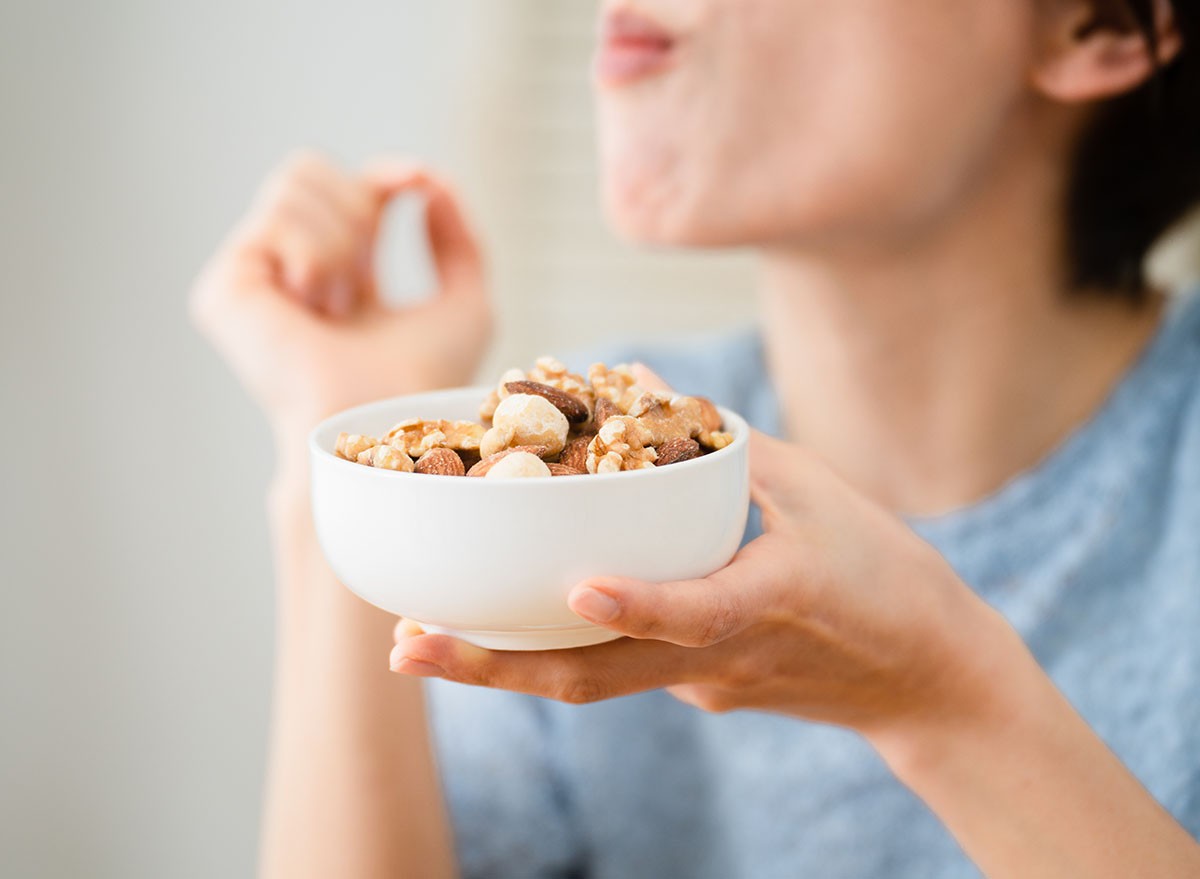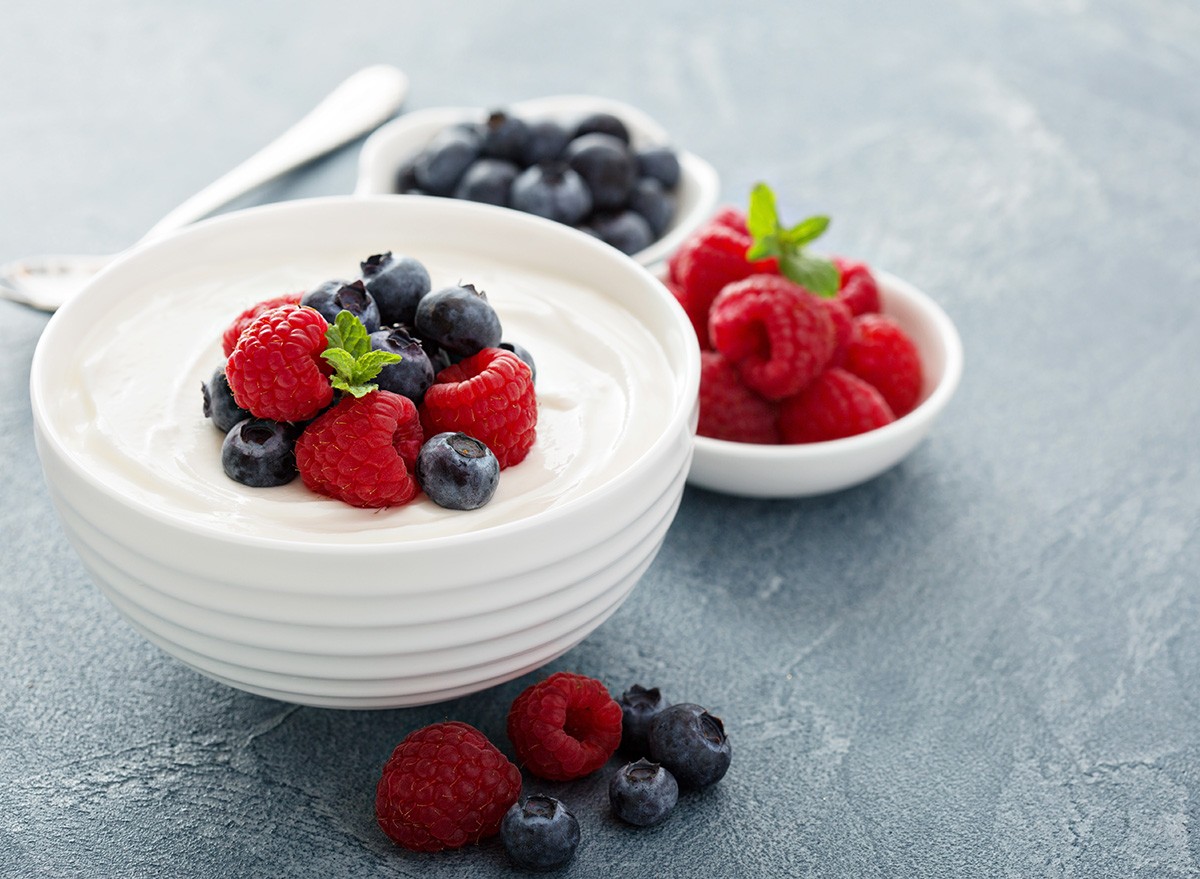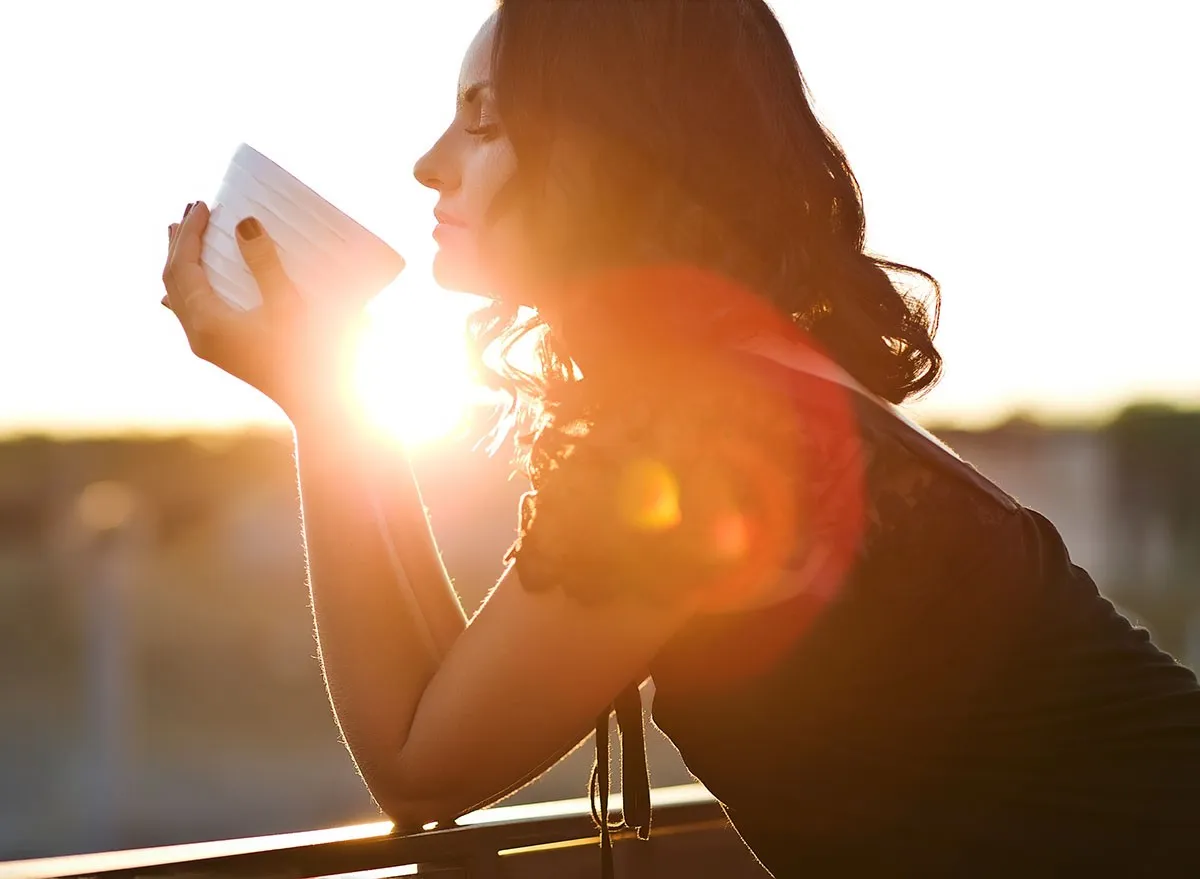9 Foods That Trigger the Ozempic Effect Naturally, According to a Nutrition Coach

In recent years, Ozempic has become one of the most talked-about weight loss solutions on the market. While effective, it comes with a hefty price tag and potential side effects that many find uncomfortable. But what if you could trigger similar weight-loss benefits naturally through your diet? Dr. Becky Gillaspy, with over 24 years of experience teaching college courses from Anatomy to Nutrition and certified as a health and wellness coach, offers a compelling alternative. Read on to discover how specific foods can naturally boost the same hormone that Ozempic mimics—without the injections or side effects.
Understanding How Ozempic Works
Ozempic works by mimicking a naturally occurring hormone in your body called GLP-1 (glucagon-like peptide-1), Dr. Becky explains in her post. "GLP-1 is a hormone naturally produced in your small intestine in response to food intake," she notes. This important hormone helps bring down your blood sugar after meals and increases feelings of fullness. By acting as what scientists call an "agonist," Ozempic essentially tricks your body into thinking there's more GLP-1 present than there actually is.
RELATED: 15 Things to Know Before Requesting Ozempic for Weight Loss
Your Body Already Makes This Weight-Loss Hormone

The good news is that your body naturally produces GLP-1 after you eat, according to Dr. Becky. "Its responsibility is to help bring your blood sugar level back down after the meal and ensure you feel full," she explains. This means you can strategically choose foods that enhance your body's natural GLP-1 production. The hormone offers three key benefits: it triggers a robust insulin response, slows digestion, and increases fullness—all contributing to better blood sugar control and weight management.
Start Your Day With Yogurt

Beginning your day with yogurt can naturally boost your GLP-1 levels, Dr. Becky advises. "The prebiotics and probiotics in fermented foods like yogurt can enhance gut health by influencing the gut microbiota, which plays a role in GLP-1 secretion," she says. As a fermented food containing both protein and calcium, yogurt offers a powerful combination for stimulating this important hormone. The protein triggers GLP-1 release as your body metabolizes amino acids, while calcium enhances this process for an even stronger effect.
Choose Your Yogurt Wisely

When selecting yogurt at the grocery store, Dr. Becky recommends avoiding low-fat varieties with added sugar. "Added sugar spikes your blood sugar," she cautions. Instead, opt for unsweetened Greek yogurt (higher in protein) or regular yogurt (higher in calcium). Either way, you're getting the benefits of fermentation plus that powerful protein-calcium combination. For flavor without the sugar spike, add berries to your yogurt for natural sweetness and additional health benefits.
RELATED: 5 Things to Know Before Taking a GLP-1 Drug, According to a Nurse Who Takes It
Boost Your Breakfast With Berries

Adding berries to your morning yogurt doesn't just make it taste better—it actually enhances its GLP-1-boosting effects. "By stirring in some sweetness in the berries, you boost the meal's polyphenol content, giving yourself a third GLP-1 advantage," explains Dr. Becky. Polyphenols are beneficial compounds that give colorful plants their vibrant hues, and they positively influence gut microbiota, supporting GLP-1 production. This is why eating a "rainbow" of foods each day can be so beneficial for your health and weight management goals.
Don't Forget Your Daily Coffee or Tea

Good news for coffee and tea lovers—these beverages contain polyphenols that can help boost GLP-1 production. "Polyphenols are also found in coffee and green tea, so feel free to enjoy a cup or two with your yogurt," Dr. Becky suggests. This means your morning ritual might already be supporting your natural weight management efforts. The polyphenols in these beverages work similarly to those in colorful fruits and vegetables, positively affecting your gut microbiome and enhancing GLP-1 secretion.
Make a Daily Salad Your Secret Weapon

A daily salad is one of the most powerful tools in your natural GLP-1-boosting arsenal, according to Dr. Becky. "Non-starchy vegetables like leafy greens, cucumbers, onions, peppers, and tomatoes are going to build on your polyphenol intake for the day and also provide fiber," she explains. This fiber not only slows digestion but also feeds beneficial gut bacteria, which produce short-chain fatty acids that stimulate GLP-1 release. Plus, the volume of vegetables physically stretches your stomach, activating receptors that signal fullness to your brain.
Top Your Salad Strategically

The toppings you choose for your salad can significantly enhance its GLP-1-boosting power. "Load up your salad with protein and healthy fats such as meat, salmon, cheese, hard-boiled eggs, avocados, nuts, seeds, and an olive oil-based dressing," recommends Dr. Becky. While she's already discussed the benefits of protein for GLP-1 production, healthy fats provide additional advantages. These fats stimulate the secretion of cholecystokinin, a hormone that slows stomach emptying and enhances digestion, keeping you fuller longer.
Design Your Dinner for Sustained Fullness

To maintain elevated GLP-1 levels throughout the evening, Dr. Becky suggests structuring your dinner around non-starchy vegetables and protein. "Serve a healthy portion of non-starchy vegetables alongside a protein-rich entree like meat, chicken, or fish," she advises. This combination creates a meal that digests slowly, producing a steady blood sugar response that helps you avoid evening snacking. Including healthy cooking fats like butter, avocado oil, or high-quality olive oil adds to the meal's satisfaction factor.
Why Timing Matters for GLP-1 Production

The timing of your meals can impact your natural GLP-1 production and weight loss results. "Eating too close to bedtime elevates blood sugar and insulin overnight, blocking fat loss," warns Dr. Becky. This means that allowing several hours between your dinner and bedtime can enhance your body's natural fat-burning potential. A well-timed, GLP-1-promoting dinner helps you move comfortably through the evening without the urge to snack, supporting your weight management goals even while you sleep.
The Mediterranean Keto Connection

Many of the GLP-1-boosting foods highlighted by Dr. Becky come from the Mediterranean Keto approach. "The foods I highlighted in this video are from my Mediterranean Keto Cookbook," she mentions. This eating style emphasizes fermented foods, protein paired with calcium, polyphenol-rich plants, fiber, and healthy fats—all key nutrients for enhancing your body's natural GLP-1 production. By following this approach, you can experience improved hunger satisfaction while potentially achieving similar benefits to GLP-1 medications without the cost or side effects.
RELATED: 20 Possible Ozempic Side Effects
Simple Daily Habits for Natural Weight Control

Dr. Becky recommends incorporating her "0123 strategy" into your daily routine for enhanced weight management. This approach outlines four daily habits that support weight loss naturally, including the daily salad she discussed for GLP-1 production. By focusing on these simple, sustainable practices rather than restrictive dieting, you can create an eating pattern that naturally enhances your body's GLP-1 production. These habits work with your body's natural systems rather than fighting against them, making weight management more comfortable and sustainable. And if you enjoyed this article, take advantage of these 15 Quick Ways to Lose Body Fat Percentage in a Week.




